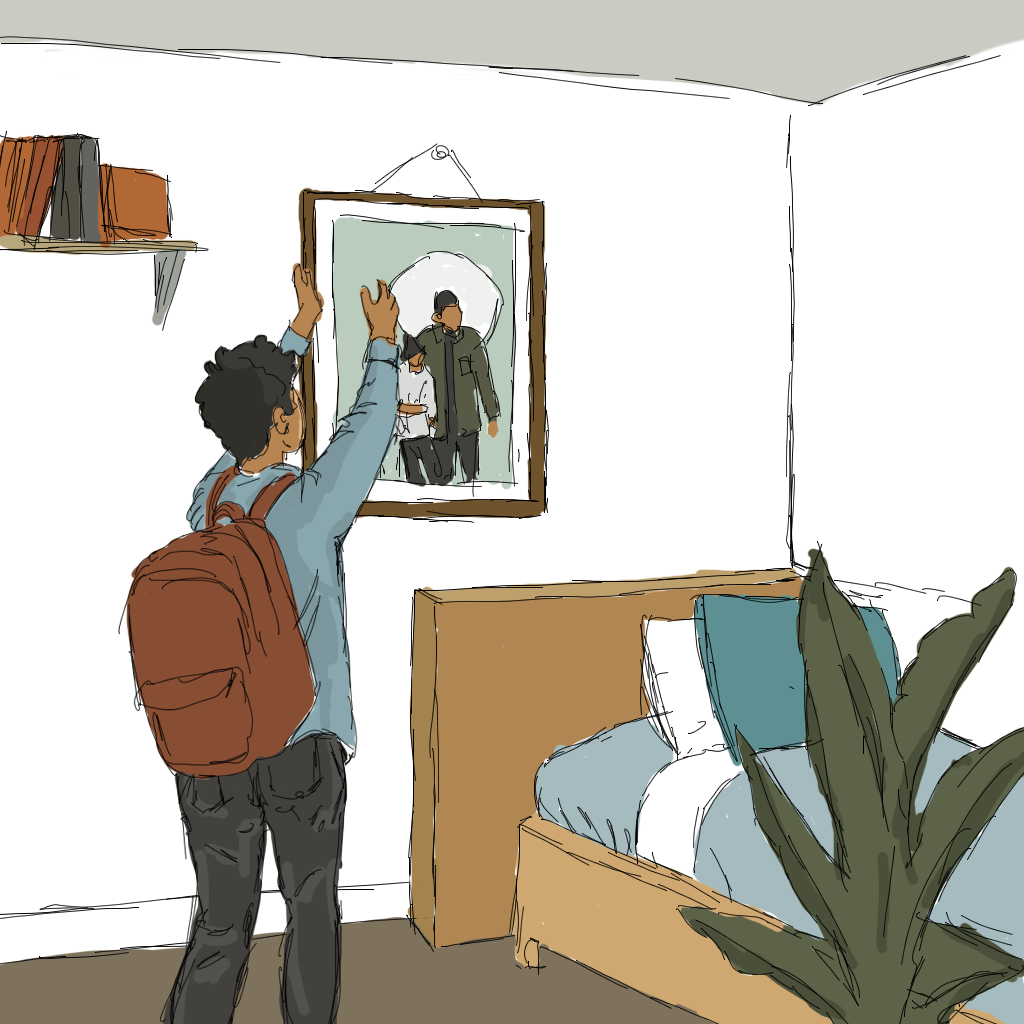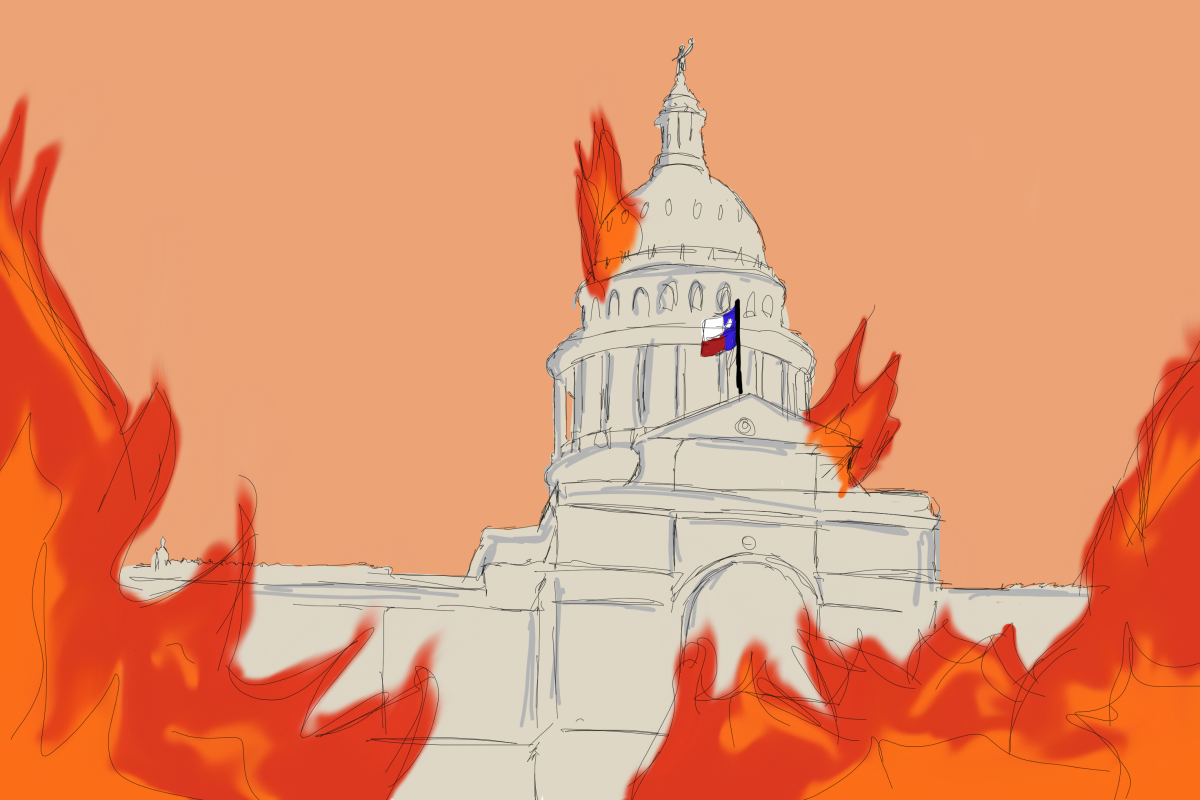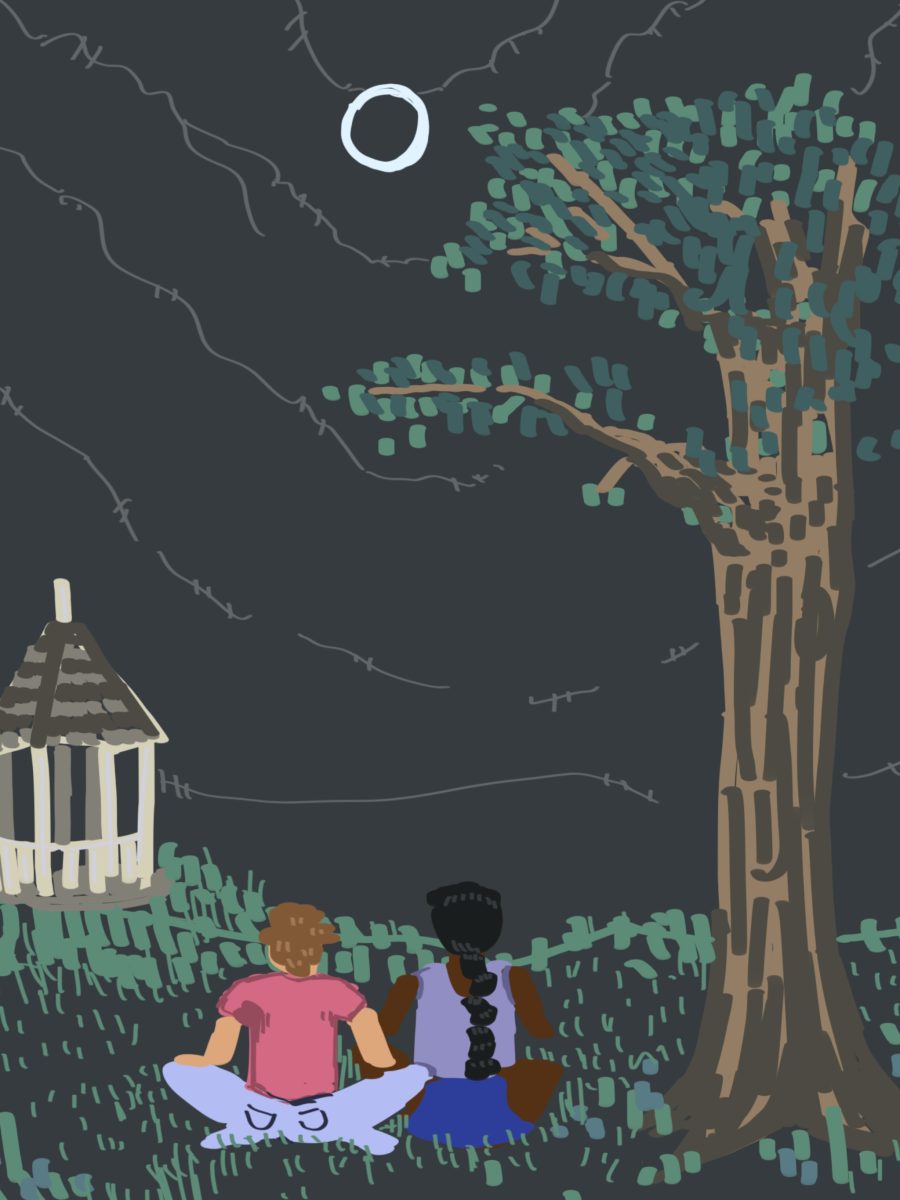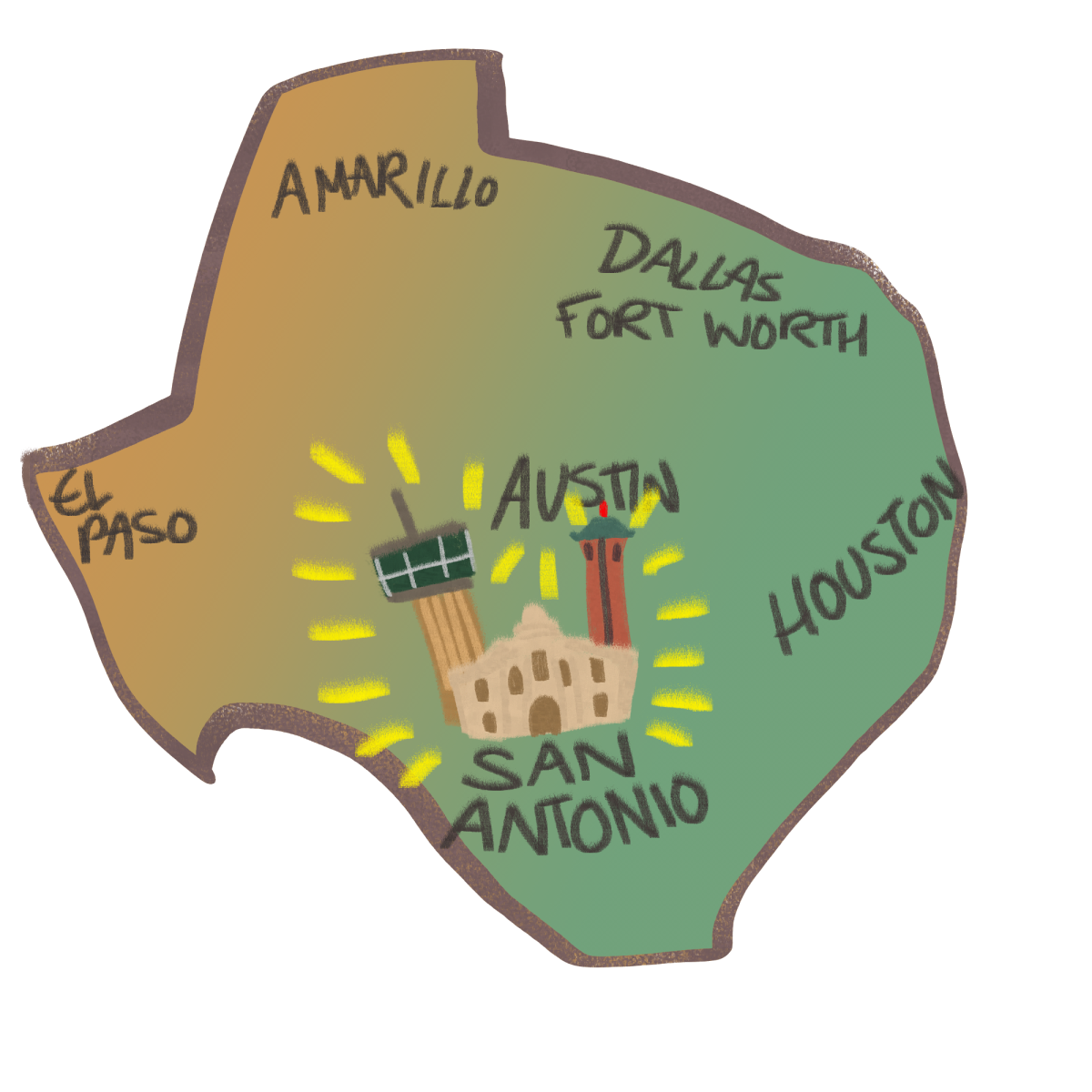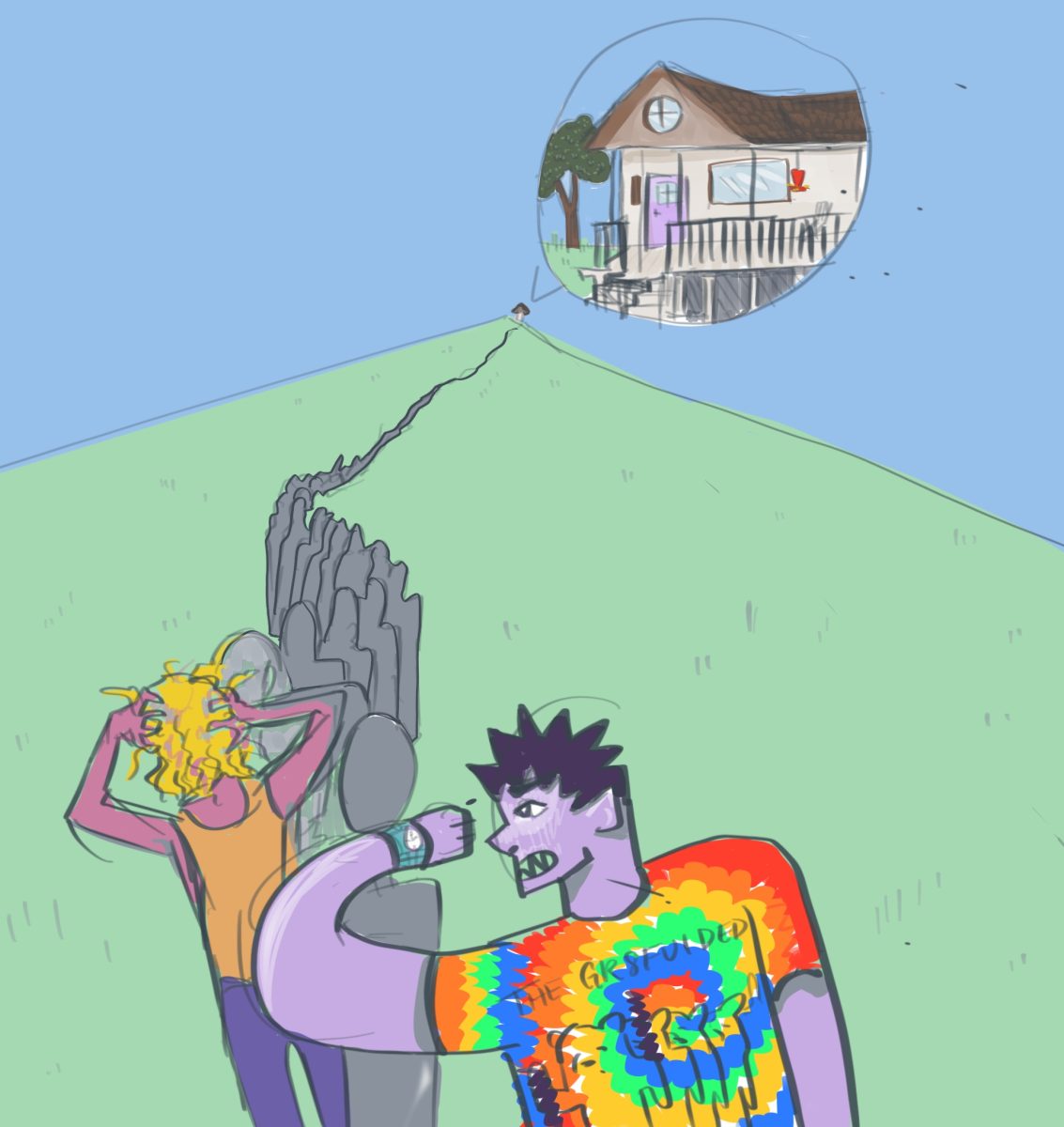With its glass-and-red-brick faà§ade, the new Center for Sciences and Innovation looks””from the outside””as if it might embody similar architectural principles as the other classroom buildings on campus. The building’s combination of these two familiar materials, however, indicates a new and slightly questionable view of the purpose of glass in academic architecture.
Glass normally serves in Trinity’s classroom buildings in one of two ways. Most of our lobbies have huge glass walls to create inviting transitional areas between indoor and outdoor space, and most of our classrooms have several windows to create a more pleasant, less cave-like learning environment.
The CSI building, though, has introduced a new use for glass in the classroom. Rather than natural light or pretty scenery, the giant glass walls on several of the new science labs provide students with clear, unobstructed views of: the hallways! And while these hallway views may be lacking in live oaks and lawns, they have several things you normally don’t get to see while sitting in the science lab: friends and acquaintances and infinite varieties of random passersby.
This design decision has a rather different effect on the learning environment than a typical classroom window. Anyone who has ever had class outside near a high-traffic sidewalk is well aware that these pedestrian views often present a tricky predicament: whether to rudely ignore your passing friends at this random-and-unexpected-and-somehow-so-exciting chance to wave to each other, or whether to rudely ignore your professor at this everyday-and-fully-expected-but-still-wonderful chance to gain knowledge and wisdom. Avoiding this dilemma is the reason professors often try to steer outdoor classes to secluded grassy knolls, and””to me””it seems like it’s also the reason classrooms normally have solid walls.
Why the glass, then? From what I’ve gathered, the new glass architecture is intended to have truly worthwhile and exciting effects. The impressive new facility is supposed to convey Trinity’s investment in science to prospective students and faculty, and the glass science labs are intended to show them and the campus community what exactly the science students are doing. This increased openness and transparency in architecture also reflects a desire to promote greater interdisciplinary communication and collaboration, so that this shining glass monument is meant as both a gesture of faith in Trinity’s future and a material embodiment of the fundamental ideals of a liberal arts education.
In reality, however, even though these intentions are completely valid and beautiful, the new glass labs and classrooms seem more like an example of too much idealistic symbolism and too little grounding in practical material concerns. While, yes, we should certainly let people know what’s going on in the sciences, one has to wonder whether these science-student display cases might be slightly uncomfortable for said science students. Rather than allowing visitors to peer at students through the walls””and to distract them as they handle mysterious chemicals””maybe it would be better to arrange for science exhibitions or write Trinitonian articles about current projects and events. And as for interdisciplinary communication, we might have to realize that realistically, opaque walls don’t keep people from collaborating. Only people can keep people from collaborating. With conscious effort and planning, and maybe some meetings between faculty and students from different departments, I’m sure we can achieve the goals this new building symbolizes. But for those meetings to work most effectively, we should have them in rooms with real walls.

